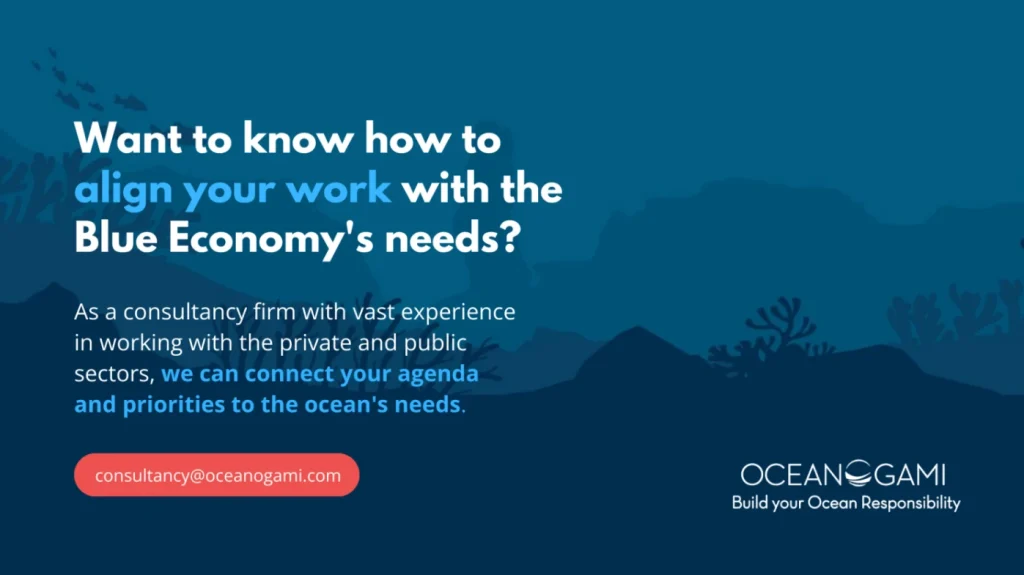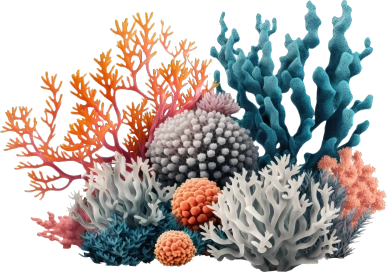Scattered throughout two-thirds of the sea floor lies millions of square kilometers of untapped metal ores and critical mineral deposits. Current terrestrial mining pollutes freshwater resources, harms nearby communities, and contributes to deforestation, so attention has turned to the ocean and its abundant deposits as the potential future of mineral mining.
“Deep-sea mining is the process of extracting these minerals for use in green technology, electric vehicles, and modern electronics.”
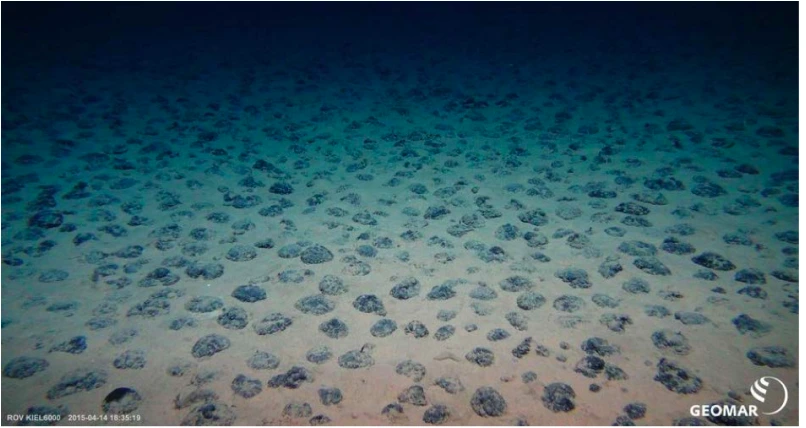
Clusters of half-buried polymetallic nodules along the deep seabed are sparking an economic versus environmental debate over the controversial activity of deep-sea mining. Source: GEOMAR, “Deep seabed mining: A rising environmental challenge”.
Could deep-sea mining be the catalyst that pushes global renewable energy systems to the next level? Could the unique deep-sea ecosystems recover from the destructive consequences of potential mining operations?
Both questions remain unanswered as scientists, lawyers, and global decision-makers alike agree that any developments regarding deep-sea mining should be thoroughly researched before the first machine dives down.
Ecology of the Deep Sea
The deep sea is classified as the seabed and water column below a depth of 200 meters where sunlight can no longer penetrate and accounts for 95% of ocean volume.
The native flora and fauna thrive under the harsh conditions of zero light, enormous pressure, consistent cold temperatures, and varying oxygen levels. Tens of thousands of species have been identified, many endemic to certain deep-sea regions, with the possibility of millions more undiscovered.
Scientists are aware of three major ecosystem types that would be directly affected by deep-sea mining activities:
- Abyssal plains
- Seamounts
- Hydrothermal vents
The allure of nearby mineral deposits places deep-sea organisms in a vulnerable position to bear the brunt of ecological consequences from mining. Amongst the diverse array of bacteria, invertebrates, and protozoa, polymetallic nodules of valuable minerals such as cobalt, copper and manganese lie scattered extensively across abyssal plains and the deep seabed.
In a recent expedition, scientists stumbled upon a remarkable find: an active deep-sea octopus nursery nestled near a hydrothermal vent, along with the sighting of five previously uncharted seamounts boasting rich biodiversity, serves as compelling evidence of how little we truly know about the mysteries hidden within the depths of the ocean.
An oceanographer at the University of New Hampshire, Anne Hartwell, made a powerful statement about the risks of disrupting the deep-sea ecosystems:
“If even a few organisms are unable to thrive in alternate conditions, there could be wide-reaching consequences to ecosystem dynamics. There is a sea of knowledge to be learned about deep-sea biodiversity and ecology.”
This shows that the ecological effects of deep-sea mining could be more widespread than previously thought.
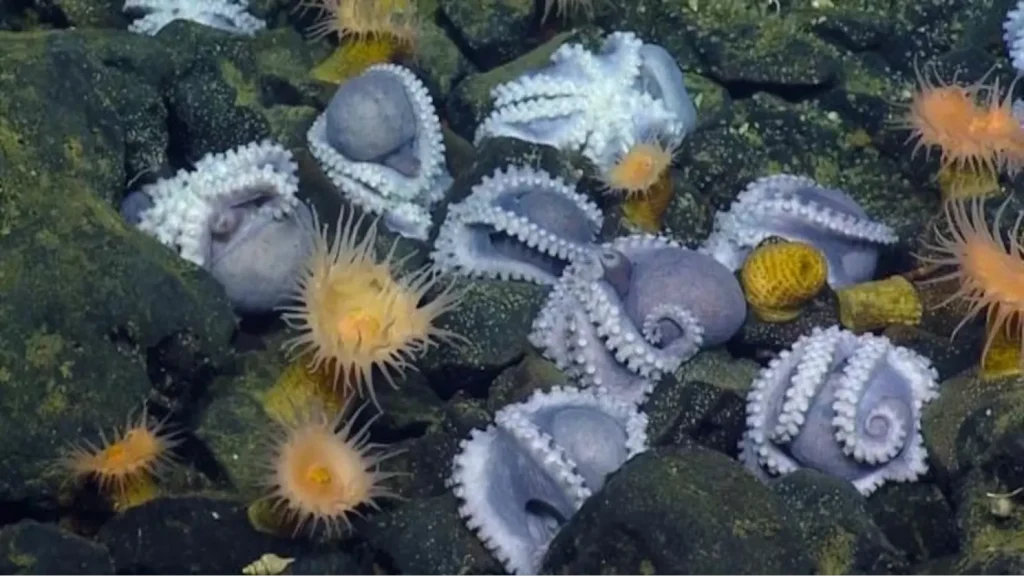
Researchers at the Schmidt Ocean Institute discovered an active nursery of 1000+ brooding octopi of a new species called Muusoctopus.
What is Deep-Sea Mining, and Where Would it Occur?
The deep-sea mining process can be separated into three components:
- A horizontal seafloor component that harvests nodules
- A vertical transport component that lifts nodules to the surface
- A surface component involving ships that handle the continuous flow of nodules and separate nodules from transport slurry.
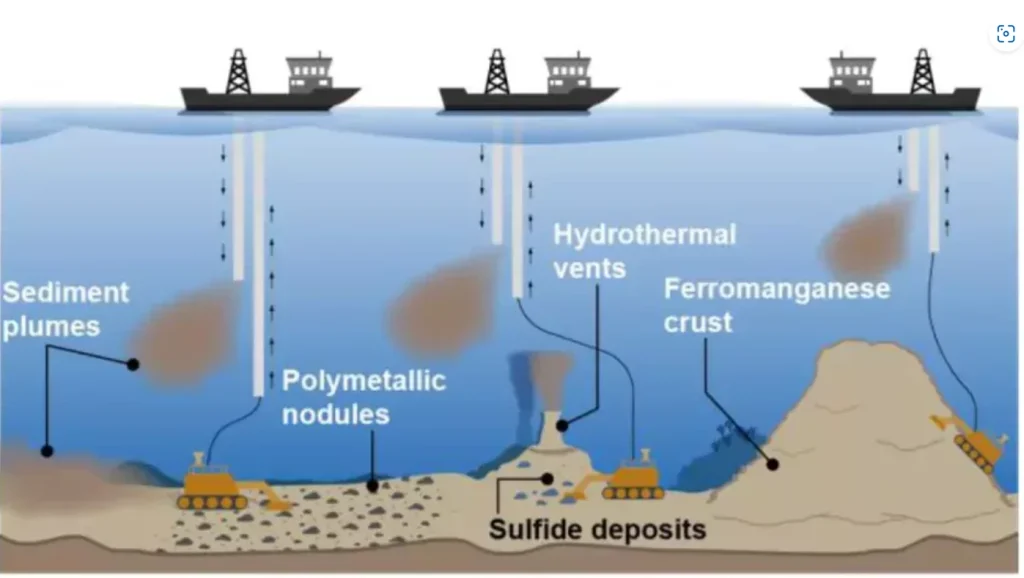
Examples of extraction systems for deep-sea mining
From an economic perspective, this form of mining requires a significant financial investment to afford the capital expenditures, labor, fuel, maintenance, processing, and production costs. The Massachusetts Institute of Technology (MIT) conducted a study that conservatively approximates the cost of a 30-year deep-sea mining operation to be $2,500 million (5 years of research and development, 23 years of production, 2 years of shutdown efforts).
Because the extent of the potential impact on deep-sea ecosystems remains unknown, this estimate excludes any environmental mitigation and restoration costs that would undoubtedly be required.
The portion of deep seabed that has the most mining potential is called the ‘Area’- the area includes the ocean floor and the layers of soil underneath that lie beyond any country’s border and is currently regulated by the UN. The ‘Area’ regions are scattered throughout the world:

Potential deep-sea mining locations in international waters (the Area) regulated by the ISA.
One of the regions of greatest interest is known as the Clarion-Clipperton Zone (CCZ) which stretches for 5,000 kilometers at depths between 4,000-5,500 meters across the central Pacific Ocean. The plethora of potato-sized nodules in the CCZ has led to 17 mining contracts, more than 1.5 million square kilometers, submitted to the International Seabed Authority (ISA), which is a regulatory body that was created to regulate mining activity in the Area.
What are the Risks?
- Direct Harm: Mobile organisms could escape destructive mining equipment in time, but sessile or immobile organisms would be killed. Noise and light pollution in an otherwise silent, dark environment would interfere with species’ feeding and reproductive cycles.
- Probable Extinction: Scientists are certain that some species would suffer extinction due to habitat removal. There is a lack of information regarding at-risk organism tolerances to the major disturbances that mining would cause. Studies also show low or nonexistent recovery rates for fauna near proposed mining sites.
- Carbon Sequestration Capacity Loss: The ocean is responsible for 25% of carbon sequestration annually, and a loss of biodiversity could reduce the ocean’s ability to mitigate global temperature increases.
- Potential Food Security Impacts: Waste slurry could spread for kilometers, harm ocean fish, and impact international fisheries by changing fish migration patterns. Seamounts also serve as feeding spots, and the degradation of these ecosystems would directly impact fish stocks and fisheries.
- Primary and Secondary Plumes: Primary plumes in the deep sea would suffocate organisms and damage feeding/breathing airways. Secondary plumes near the surface have a larger impact capacity because of greater current movement.
- Unequal Exploitation of Resources: Rich nations with advanced technology would have an unfair advantage in exploiting deep-sea resources long before other countries can benefit.
What are the Potential Benefits?
- Accelerate Clean Energy Implementation: It would help us reach the Paris Agreement level of clean energy systems. However, we would need 4x of the current mineral inputs since the current mineral supply and mining pace falls short of the amount needed to transform the energy sector into clean energy alternatives.
- Diversify Global Mineral Markets: For lithium, cobalt, and certain rare earth elements, the top 3 producing nations control more than 75% of global output from terrestrial sources. Deep-sea mining in respective national EEZs would allow other countries to become players and benefit from the growing mineral market.
- Cleaner Alternative to Terrestrial Mining: It would eliminate the need for the construction of permanent mines and transport infrastructures. Surface vessels, platforms, and machinery would be mobile and reusable.
What is the Current State of Deep-Sea Mining?
Regarding seabed ownership rights, countries with sovereign waters have an Exclusive Economic Zone (EEZ) that extends roughly 200 nautical miles from their baseline, where they are currently permitted to conduct deep-sea mining:
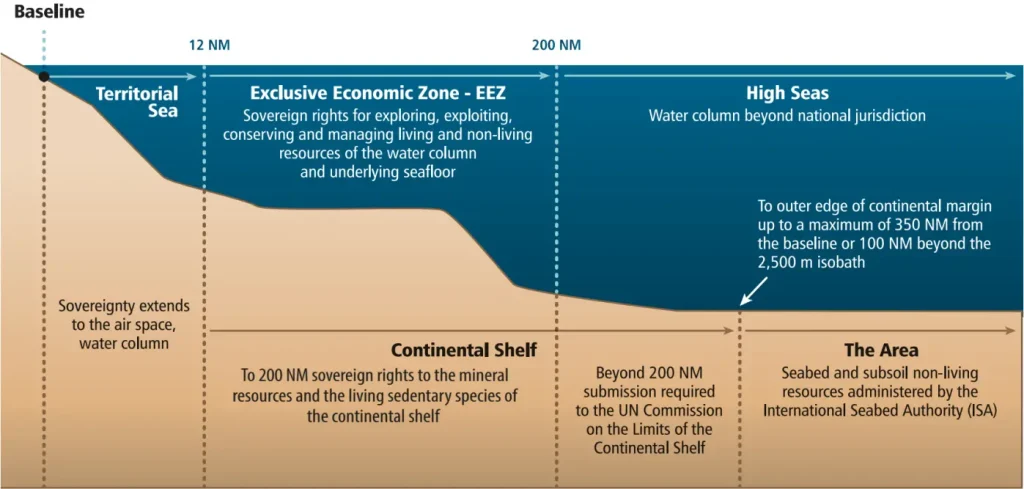
A breakdown of the maritime zones relevant to deep-sea mining
Seabeds beyond these boundaries fall under the jurisdiction of the High Seas and are regulated by the ISA. The UN Convention of the Law of the Sea (UNCLOS) states that resources found in international waters belong to all nations, so a share of benefits must be considered prior to any mining activity:
- In an effort to conserve biodiversity, the ISA has established 9 Areas of Particular Environmental Interest (APEIs) across the CCZ, totaling 1.44 million square kilometers of seabed where mining is prohibited.
The ISA has until 2025 to draft operational requirements, safety and inspection standards, and mining code environmental regulations for deep-sea mining.
“A global approach coupled with interdisciplinary collaboration will be essential to resolving deep-sea mining concerns in national and international waters.”
Conclusion: A double-edged sword
Currently, the most significant challenge of deep-sea mining is “precisely assessing the value of the potential damage to deep-sea ecosystems and biodiversity,” as stated in the IUCN report.
While the true breadth of biodiversity in the deep sea remains a mystery, the importance is indisputable.
Today’s decisions regarding deep-sea mining will impact future generations both through ecosystem disruption and clean energy alternative advancements.
There is an opportunity to reduce mineral demand through increased recycling of batteries and current technology; however, the IEA estimates that it will take several decades before this process yields a supply large enough for commercial use.
Mining for critical minerals is a double-edged sword that the ISA must wield carefully to best meet the needs of current society without sacrificing the ability of future generations to meet their own needs.
To keep the discussion going about important topics that concern ocean sustainability, such as deep-sea mining, Oceanogami maintains a commitment to continue reporting on critical marine policy updates to keep the public informed.
